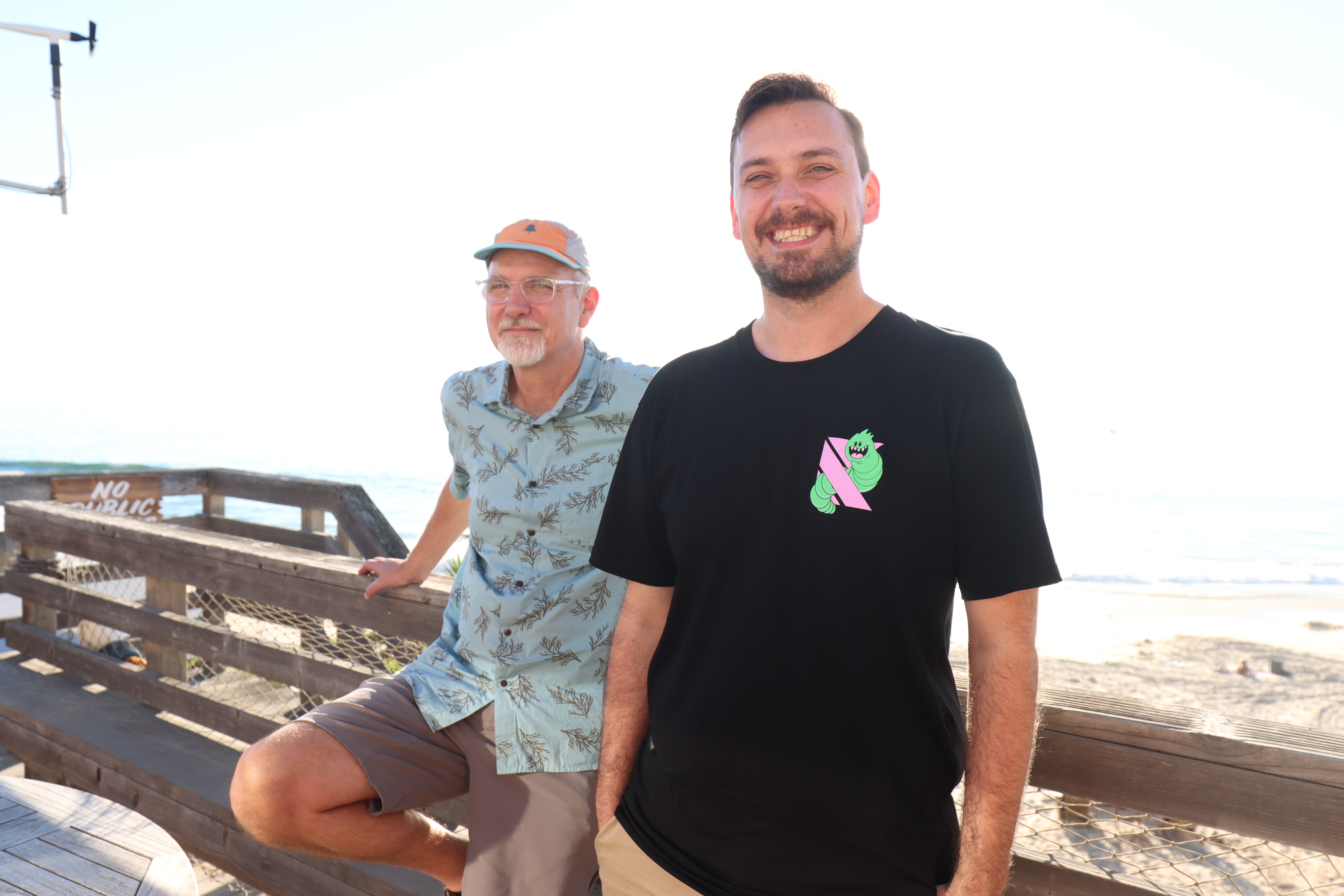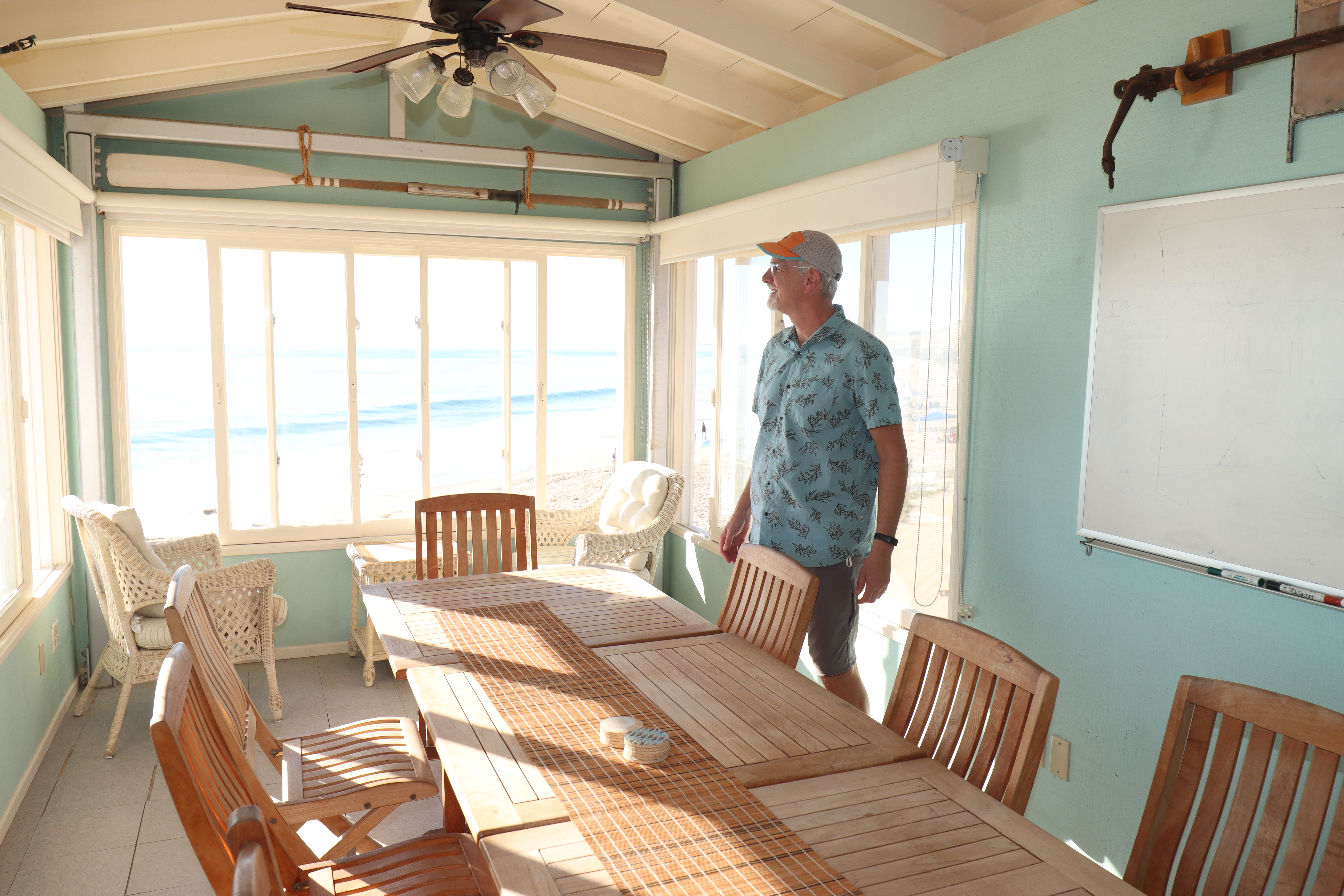UCI Climate Science at California’s Crystal Cove State Park
Professor Jim Smith of the UCI Department of Chemistry stands in front of a red cottage that's also a secret laboratory at Crystal Cove State Park in Orange County.
Last October, at California’s Crystal Cove State Park, the waves crashed on the beach and let loose their sea spray, and Professor Jim Smith of the UCI Department of Chemistry and his new graduate student, Jeremy Wakeen, watched. The two were doing research on the nano-scale particles jettisoning into the air from the countless popping bubbles churning in the crashing waves, and their lab was the ocean at Crystal Cove and a red beachfront cottage that’s part of a small neighborhood of cottages that sit right below Pacific Coast Highway south of UC Irvine. The cottage is a base of operations for both the lifeguards at the beach and for UCI researchers whose work might benefit from the natural processes at work on the coast.
Smith is an atmospheric chemist and an aerosol scientist who, when he’s not riding his bike around Southern California’s mountains, is busy studying the role aerosols play in Earth’s climate change machine — but also just how aerosols behave in general, which turned out to be an asset during the pandemic. Two years ago it was Smith’s lab that spearheaded the UCI Face Mask Project, which sought in the early days of the pandemic — back when face masks were initially scarce — to figure out with the help of a mannequin named Tony what household materials and designs would be best for people to use to make their own at-home masks.
Almost two years later, in the red cottage, Smith and Wakeen worked on the second floor in a room where they kept a machine called a volatility tandem differential mobility analyzer. The analyzer sat near a window, and it would suck in marine air from outside so it could measure the salt content of particles in the air, and, in the process, help settle a debate in Smith and Wakeen’s research community about the role aerosol salt particles catapulting into the air from popping bubbles in the ocean play in climate change.
“It may seem like ‘who cares?’ right?’” Smith said as he sat in the reading room of the cottage in front of windows that let in the golden southern California sunlight.
Marine bubbles pop and send droplets into the air, which immediately dry to form particles that serve as the seeds upon which water vapor condenses to form clouds like the marine layer and fog that can roll over Orange County. Everyone knows how much cooler mornings in Irvine are when the marine layer forms overhead, which shows how important marine clouds are to our local climate. The composition of particles, together with their size, largely determines their ability to seed a cloud droplet. Salty particles accept water vapor readily, but particles composed of organic matter can actually repel water vapor.
In Smith and Wakeen’s research community, there isn’t a consensus on just how salty marine particles are. One hypothesis is that the smallest particles are mostly organic, made from bubbles that burst on the organic film that forms on the ocean surface, the latter the result of biological activity in ocean waters. As particle size increases, they may in fact become saltier as processes like wave-breaking become more important. Because of this, it’s important to measure how salt content may vary with particle size.
That’s why Smith and Wakeen were at the cottage sampling the air.
“Coming into this measurement work, we did not have a complete understanding of how marine particle composition may change with size,” said Smith. “Looking over our measurements from Crystal Cove, it appears that marine particles may only be around 10-20% salt, with the rest organic.”
Results like these can change how we understand how climate change works, because they inform the computer models that scientists use to predict how things like wave-breaking and bubble bursting impact cloud formation. What’s more, humans may be contributing to the organic composition of ocean waters via pollution and the fertilization of marine algae and phytoplankton through the runoff of things like agricultural fertilizers on land.
“People are just trying to figure out how to predict human-caused climate change,” said Wakeen. “Small uncertainties lead to large uncertainties in climate predictions.”
Smith and Wakeen stopped taking samples at the red cottage in November, but they plan to continue their measurements soon, taking advantage of one of the best field laboratories for marine aerosol research right in UCI’s own backyard.


